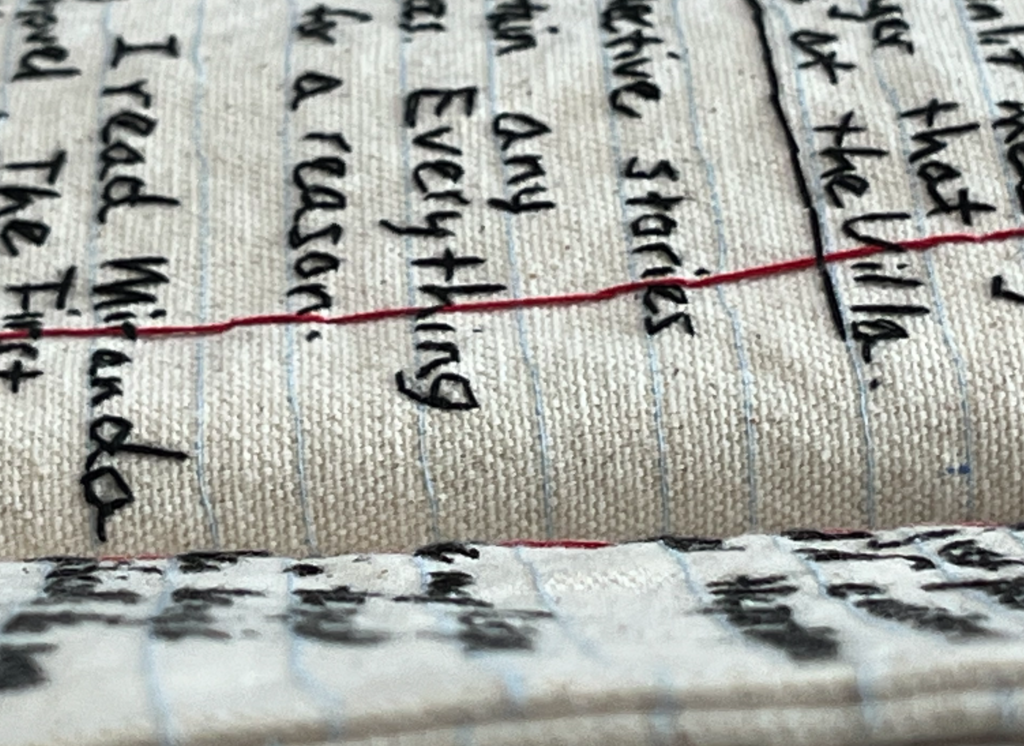Studying this book has led me to question if it is truly a book at all, and this exercise brought me no closer to the answer. If “ceci n’est pas une pipe” then maybe ceci n’est pas un livre!
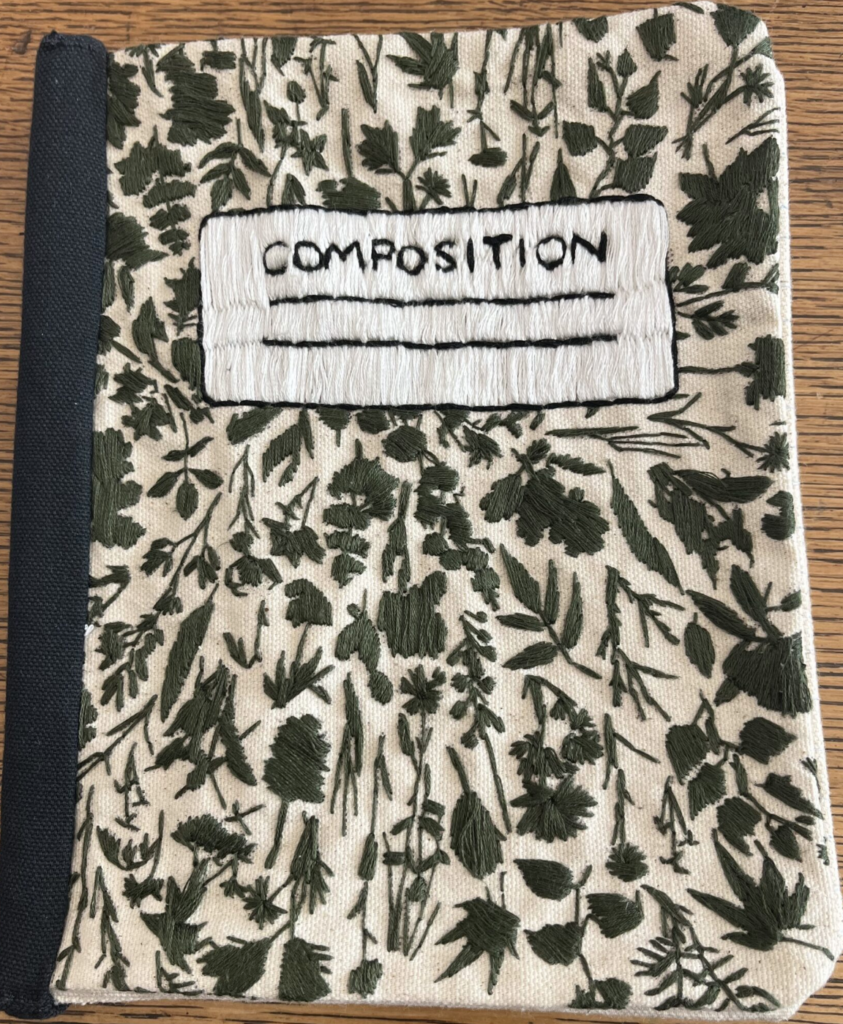
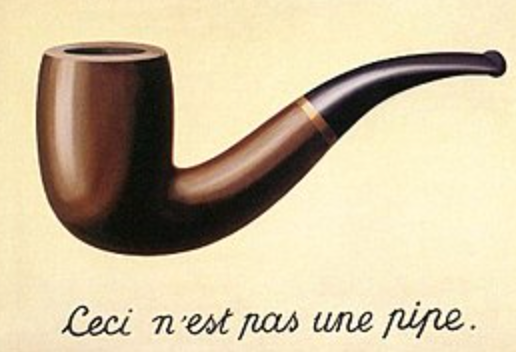
Maybe my understanding of what a book is has simply been limited by the language I’ve been given about books. Or maybe, Hicks didn’t set out to create a book at all, but instead, an art installation that plays with elements of words, images, and our own perceptions to make a statement.
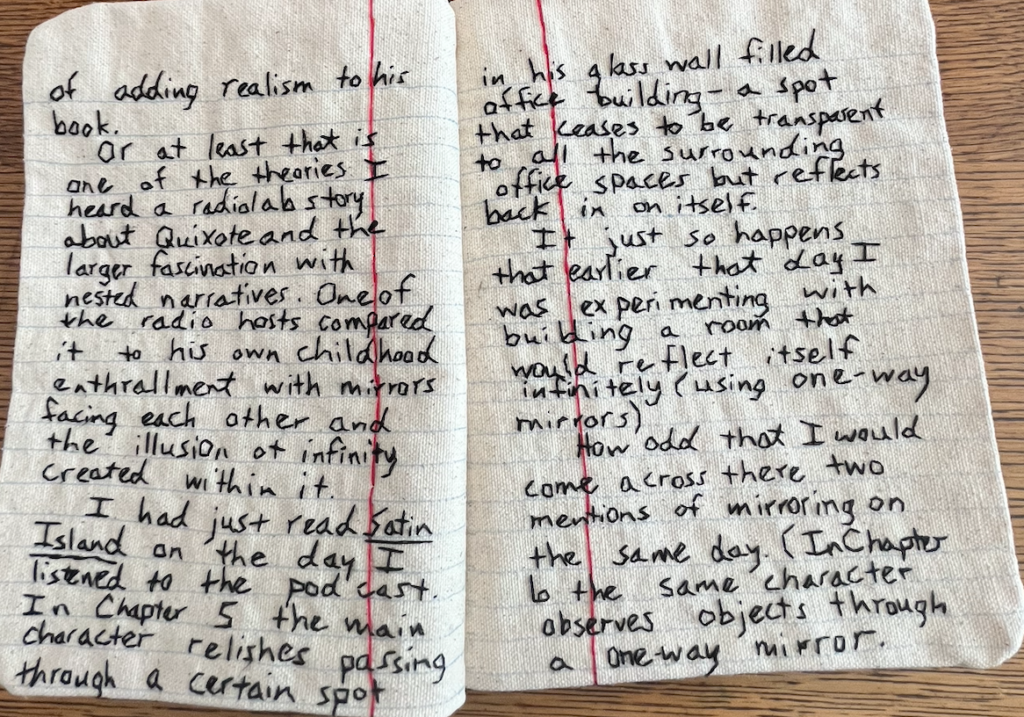
This blog post admittedly took a bit more analysis and effort than my previous two, simply because Common Threads has no pictures, at least, not in the traditional sense of the word. In a way, the entire book itself is the image, which makes it difficult to separately identify the two. In the same way that Hicks invites us to question “what is a book”, she also encourages us to think more in depth about the relationship between words and images when the entire book is a carefully curated work of art.
The only “images” that are easily identifiable in Common Threads are on the upper and lower covers, which are both decorated with green embroidered leaves, flowers, and other foliage-like shapes, but even then, I’m not sure that I would call them images in this context. In looking at her other works in the series, none of the covers seem to have any real meaning. To me, they appear to just be fun decorations of the covers, as you would see on a composition notebook in real life.
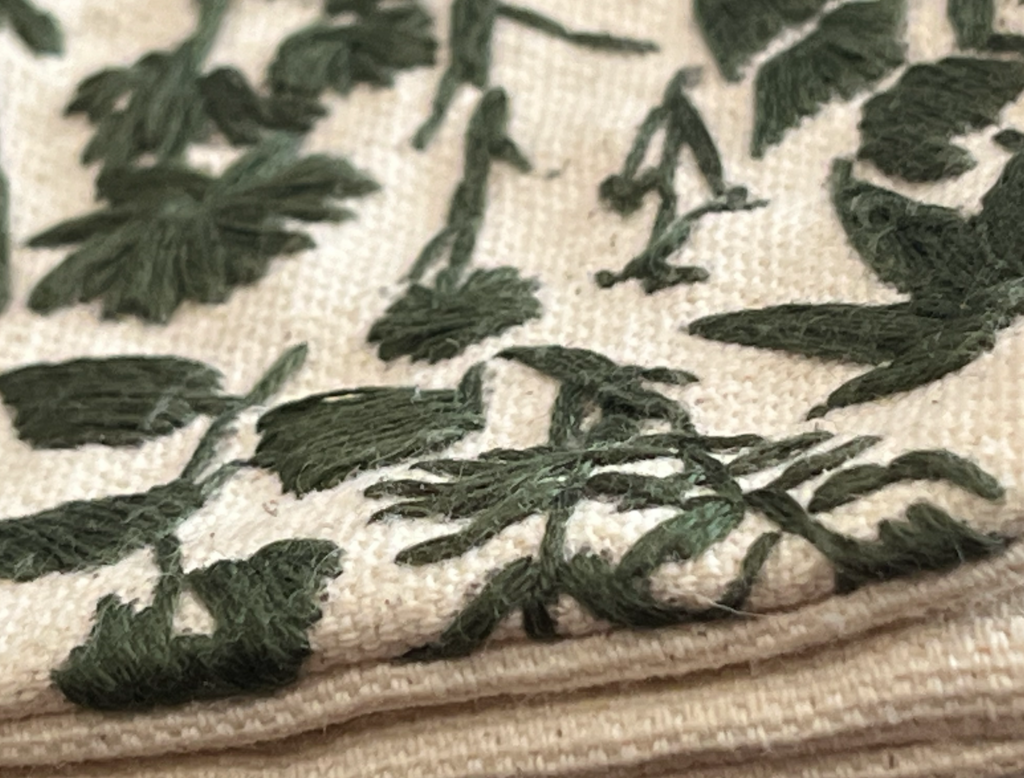

On second thought, maybe that is the meaning of the images on the upper and lower covers – to further create the illusion that this non-book is in fact a true composition notebook and encourage us to think critically about how Hick’s toys with the relationship between words and images to do so. Do the covers of composition notebooks, or the notebooks themselves have any meaning?
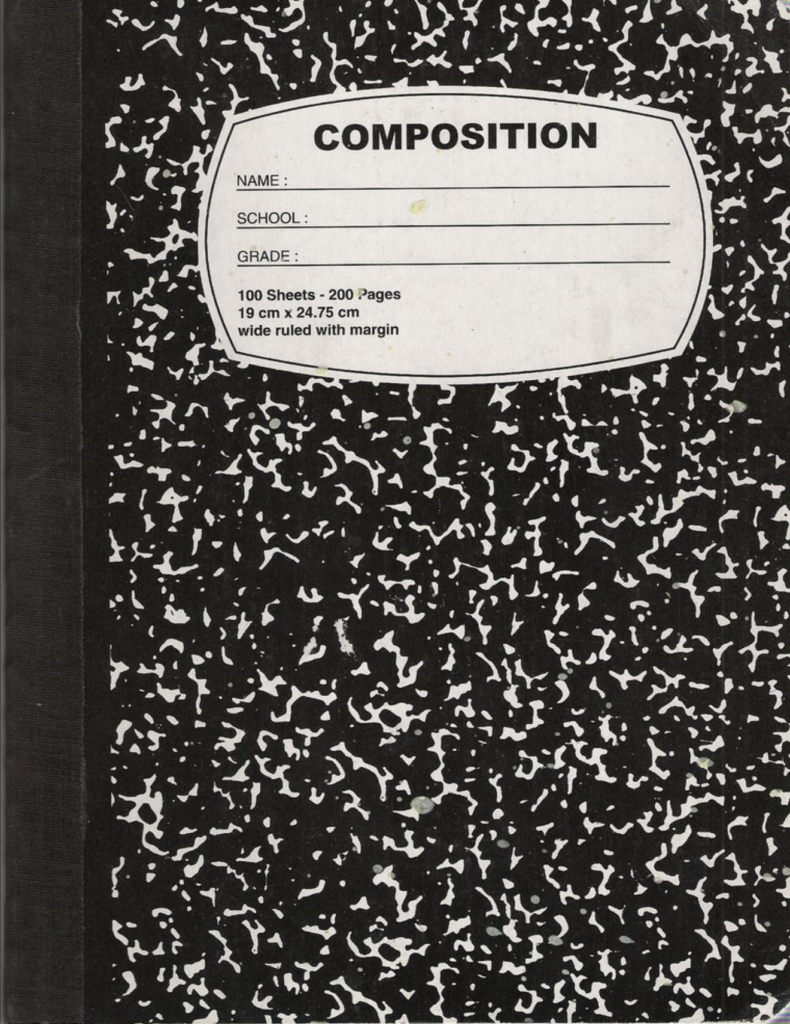
Common Threads is also a remediation of a traditional composition notebook. Composition notebooks are typically made of cheap paper and used for quickly jotting down notes or ideas, especially for school-aged children. They are easily accessible and inexpensive, and I’d assume, fairly easy to make and distribute.
Common Threads, on the other hand, is made of thread and canvas, hand embroidered, expensive, and not easily accessible at all, but somehow still evokes a similar reaction and sense of nostalgia as a composition notebook when you look at it. I think Hicks was being extremely playful in creating this series, especially with the idea of uniformity.
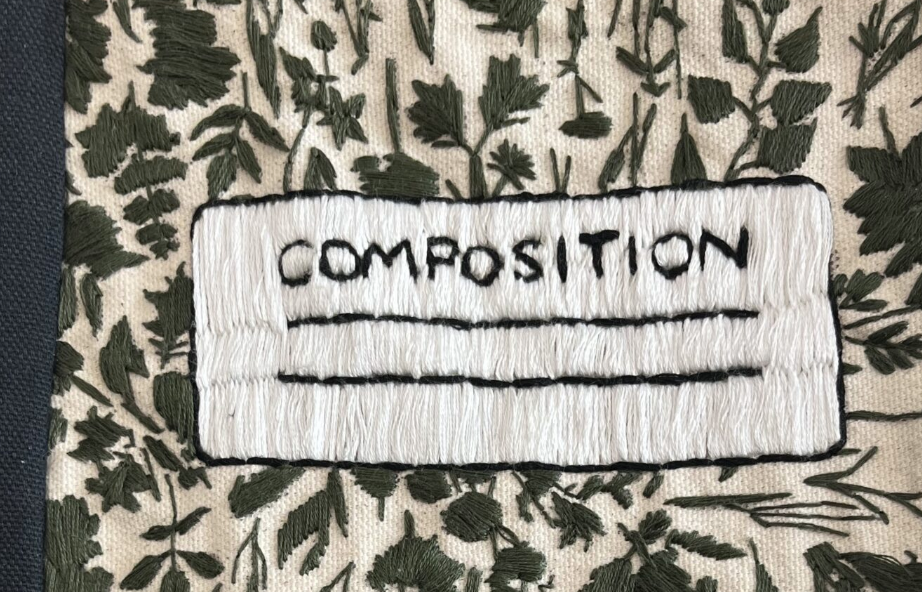
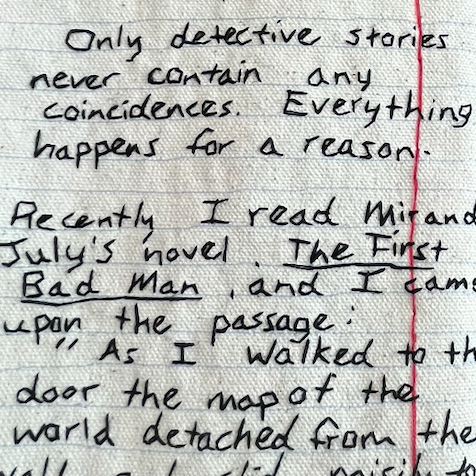
You can come to expect some level of same-ness in every composition notebook that you may encounter in a store or school house, even down to the margins of each page, but this series doesn’t adhere to this rule.
By recreating each element of the traditional composition notebook by hand, the book itself is somehow enhanced, changing the meaning of the text it contains. I can’t imagine this book would have had a similar effect if created using its original medium, or one similar that is less hands-on and time consuming.
The act of hand embroidering each line makes the text itself an image to behold and elevates its importance to readers. While this book blurs the boundaries of word and image, it also asks us to find meaning in the seemingly meaningless
